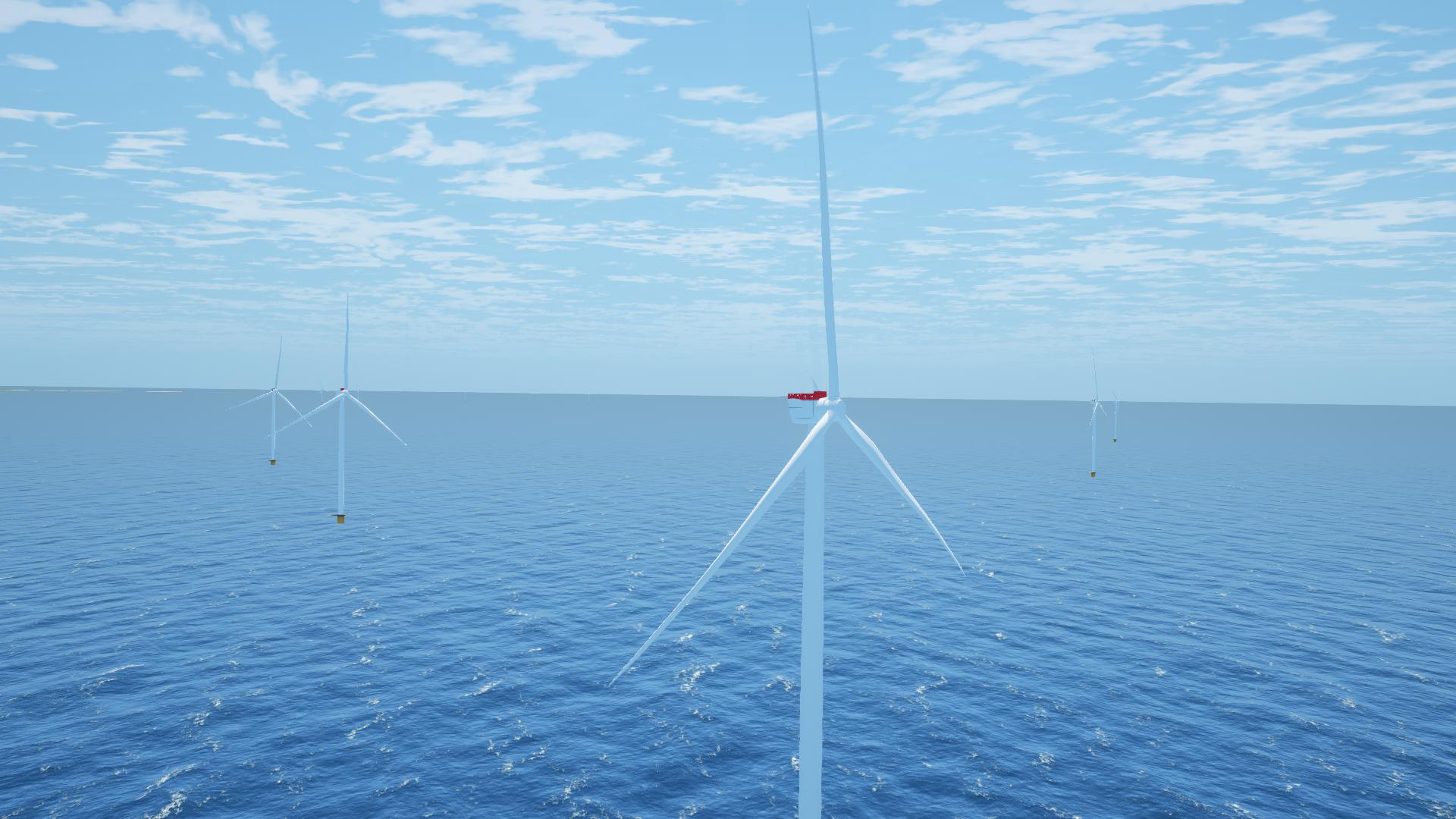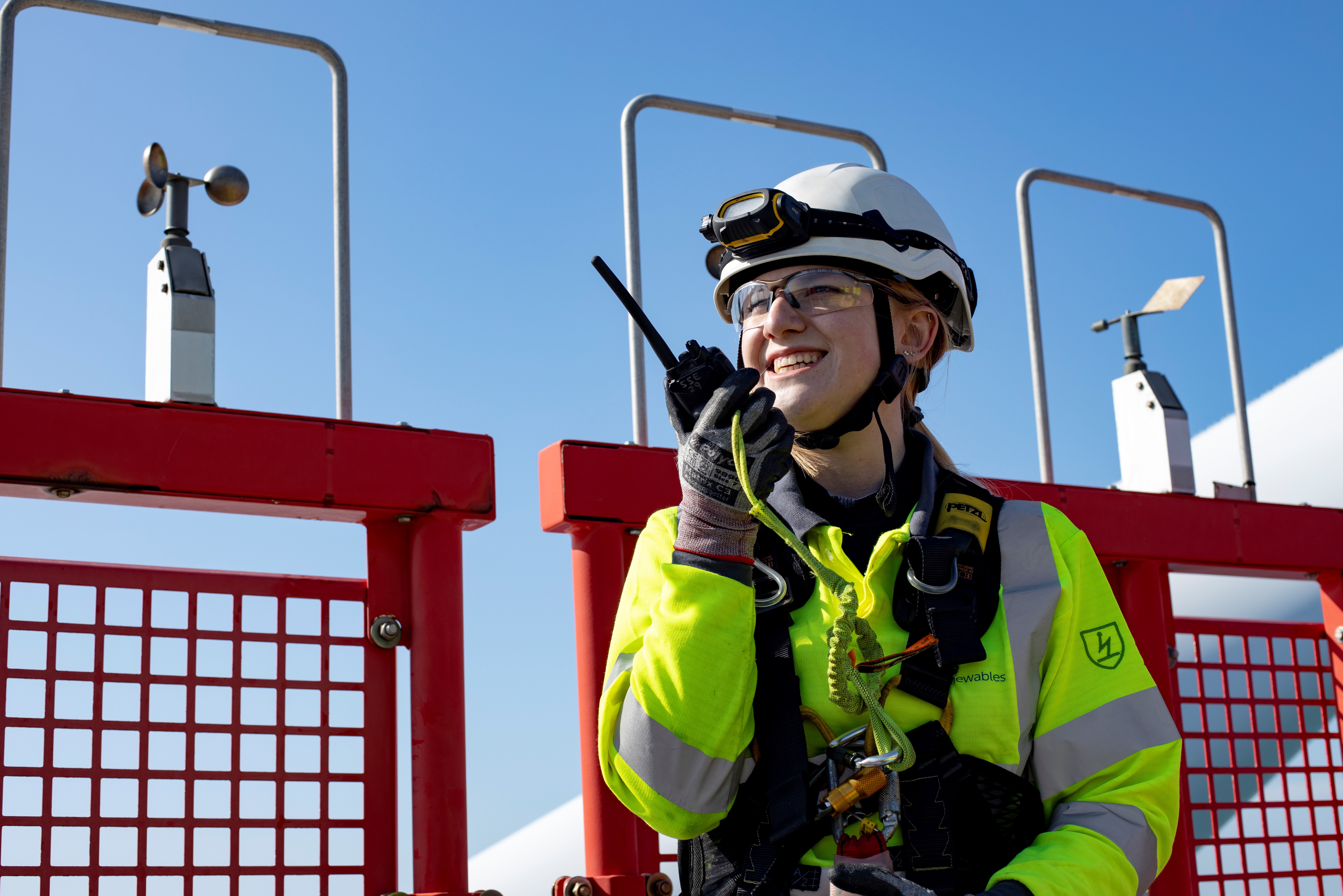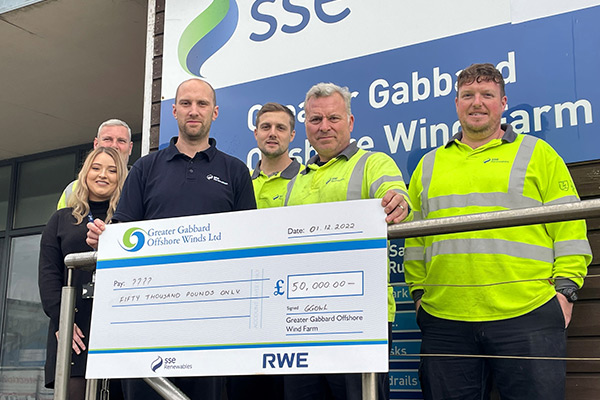The information on this page was correct at the time of publishing (July 2023). The project has since evolved and we would encourage you to read our September update for more information.
The need for North Falls
In the past 12 years the capacity of the UK's offshore wind farms has increased from only one gigawatt (GW) in 2010 to almost 14GW in early-2023. The costs per megawatt hour of offshore wind have been driven down by almost two-thirds, the sector directly employs more than 26,000 people, and it supplies on average around 15% of the nation's electricity. In short, the offshore wind sector has become one of Britain's most laudable industrial success stories. However, it is still a sector in its relative youth, with plenty of potential for further growth in the UK and for export internationally.
Full details around project need and relevant national policies can be found in the PEIR chapters:
View Chapter 2 Need for the Project
View Chapter 3 Policy and Legislative context in the North Falls PEIR
Environmental targets
There are a number of overarching UK environmental targets and goals which set the national framework for tackling climate change and for renewable energy production. These include the legally binding target to reduce the net UK carbon account and therefore reduce greenhouse gas emissions to zero by 2050. These are implemented through the Climate Change Act 2008 and the 2019 Amendment Order.
In support, the British Energy Security Strategy published in April 2022 sets out the need to increase the pace of offshore wind deployment to deliver 50GW of offshore wind by 2030. And in March this year, Powering up Britain was published bringing together both the Energy Security Plan, and Net Zero Growth Plan, as a blueprint for the UK to develop its own sources of clean energy to boost energy independence and green industries.
Powering up Britain is the manifesto that will guide the new Department for Energy Security and Net Zero on its ambitions on four areas of security: climate, consumer, energy and economic. Offshore wind, and projects like North Falls, will have a central role to play in meeting each of them.
While the green agenda needs to clear multiple hurdles to deliver on the promise of billions in investment and much-needed jobs, projects like North Falls will play an essential role in reaching the targets. We intend to continue working closely with all our stakeholders, government, local communities and the supply chain to ensure we make a positive contribution to the nation's climate ambitions, energy security and economic prosperity.
The UK Government's Powering up Britain manifesto for the Department of Energy Security and Net Zero
Download Manifesto (PDF)
Computer-generated image of North Falls
Climate change
Scientists continue to see changes in the Earth's climate in every region and across the whole climate system, including continued rise in sea levels and dramatic climate events. Climate change as a result of greenhouse gas emissions is a global issue associated with impacts on weather, ecosystems, human health and welfare. The role of human influence on the climate system is undisputed.
Offshore wind farms generate clean, green electricity powering millions of homes and businesses without burning fossil fuels. They have a vital role to play in the fight against climate change. While reducing greenhouse gases is at the core, the onus is also on developers to ensure new offshore wind farms are built responsibly, sustainably and employing the most efficient technology.
Full details of the climate change rationale for the project can be found in PEIR chapter:
Cost of offshore wind
The price of offshore wind has fallen to an all-time low with the most recent contracts for difference auction bids coming in at £37.35 per megawatt hour (MWh). These “contracts for difference” guarantee offshore wind developers a fixed price to sell electricity for 15 years. If the market price falls below the contract price, the Government subsidises the difference. If the market is higher, the companies pay money back to the government.
Since wholesale energy prices began to skyrocket last year - in May 2022, electricity prices reached a high of £263.79 - wind farms have been paying back money to the Government. This means that if more offshore wind farms were operational now, electricity prices could potentially be much lower.
Energy security
As well as reduced costs, North Falls will also play a role in helping to stabilise the nation's energy prices and improve its energy security.
By generating more electricity from offshore wind, the UK will be less reliant on international energy imports, for example oil and gas, and therefore more self-sufficient. It will also become less susceptible to global price fluctuations in such commodities, which should lead to reduced costs for consumers. The invasion of Ukraine has given a stark reminder of the need for the UK to sure up its energy supplies and as one of the windiest nations in Europe, the UK is well placed to take advantage of offshore wind technology.
Other benefits of the project
As well as helping to protect the environment and contributing to the UK's net zero ambitions, North Falls will bring numerous local benefits by way of jobs, local economy and community involvement. North Falls has completed an initial socio-economic benefits study as part of its impact assessment to better clarify the type and extent of opportunities for the local area.
In terms of employment, over the lifetime of the project there will be a wide range of direct, indirect and induced local jobs, from highly skilled to more manual roles. These jobs will be with the project team itself, as well as with businesses and contractors across the supply chain with the total number of annual full-time equivalent (FTE)* local jobs calculated at around 4000.
In terms of local supply chain opportunities, the study calculated that the gross value added (GVA)** for the local area as a result of North Falls could be up to £400 million for the lifetime of the project across the supply chain. Local companies will be well placed to take advantage of the opportunities which will be promoted via both the project and its Tier 1 and 2 suppliers as the project progresses.
* Annual full-time equivalent (FTE) is a unit to measure employed people in a way that makes them comparable although they may work different number of hours per week. ** Gross value added (GVA) measures the contribution to the economy of each individual producer, industry or sector.


Full details around socio-economic benefits can be found in the PEIR chapter:
Feedback Questions
There were a number of suggestions as to how the project could work with local firms including regional supply chain engagement, registration portals and ensuring local knowledge is utilised for issues such as drainage and soil. Also working with local companies who have had previous offfshore wind experience via the likes of the Thanet and London Array projects. Finally ensuring local land and property owners are in a position to benefit from potential work scopes such as storage, contractor accommodation and complimentary opportunities.
GREATER GABBARD OFFSHORE WIND FARM
As an extension project, North Falls would aim to emulate the initiatives of its sister project Greater Gabbard and therefore these provide an example of the type of socio-economic benefits that could be achieved:
-
Greater Gabbard represented a total investment of around £1.5 billion and a new facility was constructed in Lowestoft, Suffolk for the project's operations & maintenance base.
-
Around 120 long-term, skilled jobs were created to operate and maintain the wind farm, with 95% of those recruited from the local area.
-
These roles were in addition to the hundreds of jobs created during construction.
-
Greater Gabbard has engaged 10 apprentices since the start of operation, offered junior engineer roles and employed ex-fishermen on crew transfer vessels as part of the drive to find locally skilled people to fill roles. In 2022, the project announced a five-year trainee plan to further grow apprentice numbers.
-
Since starting operation, the project has invested more than £250,000 in community funds and local training initiatives, and in late 2022 a further £50,000 fund was announced in celebration of the project's 10 year anniversary.

Planning policies
National Policy Statements (NPS) were prepared by the UK government in 2011 in accordance with the obligations of the Climate Change Act 2008, and set out a case for the need and urgency for new energy infrastructure. In total there are three National Policy Statements relevant to the decision-making process on North Falls:
-
EN-1 Overarching Energy, which highlights that there should be a presumption in favour of granting consent for projects which fall within relevant NPSs and recognises that offshore wind is a key factor in meeting UK policy objectives;
-
EN-3 Renewable Energy Infrastructure, which covers national significant renewable energy infrastructure, including offshore generating stations in excess of 100MW;
-
EN-5 Electricity Networks Infrastructure, which covers the electrical infrastructure in conjunction with EN-1.
The PEIR demonstrates how the development of North Falls would comply with and support the policies stipulated by these statements. On 30 March 2023 a consultation was launched on draft revisions to the NPS with the final revised versions designated by the Government in mid-2023. These will be taken into account by North Falls as the project progresses.
Regarding other planning policies, local authorities are required to prepare and maintain up-to-date Local Development Plans which set out their objectives for the use and development of land within their jurisdiction, and general policies for implementation. The onshore project area falls under the jurisdiction of Tendring District Council and Essex County Council. Relevant Local Development Plans have been considered during the onshore site selection for the project to mitigate conflict with site-specific planning allocations.